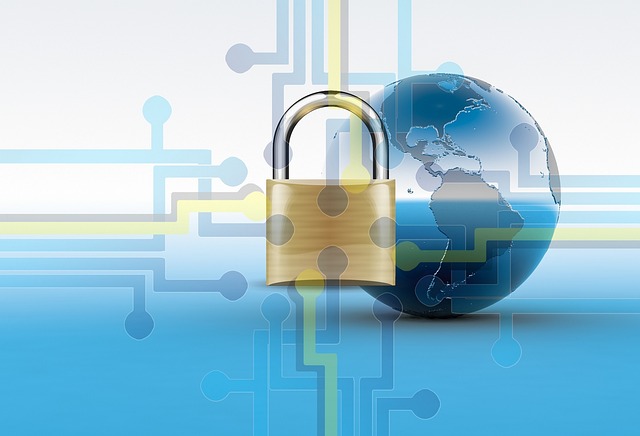In today’s rapidly evolving digital ecosystem, the boundary between privacy and public interaction is increasingly porous. Every click, every shared image, and every fleeting message leaves a trail that can be analyzed, stored, and, if mishandled, exploited. When the conversation turns to social etiquette, it is no longer enough to be polite in words alone; one must also navigate the rules that govern the safety of personal data and the integrity of digital communications. This nuanced interplay shapes how we behave online and informs the protocols we adopt to protect ourselves.
The Foundations of Digital Courtesy
Digital courtesy extends beyond the absence of rudeness. It encompasses an awareness that our digital footprints are visible, often beyond our control, and that we carry an implicit responsibility toward others’ comfort and safety. Good etiquette starts with consent—requesting permission before sharing personal content or forwarding sensitive messages. It also means recognizing that tone can be distorted without non‑verbal cues, so we strive to phrase our words carefully to avoid misunderstandings.
- Use respectful language in all online exchanges.
- Seek explicit permission before reposting content.
- Adjust tone when addressing unfamiliar audiences.
Security Protocols as an Extension of Etiquette
When we talk about security protocols, we refer to the systematic rules that safeguard information. Yet these protocols are inseparable from social norms. They provide a framework for trust, allowing individuals to share ideas freely while minimizing risk. Proper implementation of security protocols—such as encryption, two‑factor authentication, and secure password management—acts as a silent nod of respect to the privacy of others. Neglecting these measures can be perceived as disregard for one’s digital companions.
“Security protocols are not just technical safeguards; they are declarations of trust.” – Anonymous Digital Ethics Advocate
Modern Communication Platforms and Their Etiquette Challenges
Instant messaging apps, social networks, and collaborative tools have condensed our conversations into compressed, fast‑moving streams. These environments blur the line between formal and informal contexts, often leading to unintentional breaches of etiquette or security. Users must be mindful of who can see their posts, how messages are stored, and what data the platform may harvest. For instance, a seemingly innocuous image may contain embedded metadata that reveals location or device information. Recognizing these hidden layers fosters a more thoughtful approach to digital sharing.
Common Social Trends Influencing Etiquette
The rise of micro‑content, live streaming, and virtual reality has reshaped how we communicate. Micro‑content—short, digestible messages—promotes immediacy but often sacrifices depth and context. Live streams invite spontaneous interaction but can expose unintended audiences if privacy settings are lax. Virtual reality environments create immersive spaces where non‑verbal cues dominate, demanding heightened awareness of body language and spatial etiquette. These trends push users to adapt their behavior, blending traditional politeness with new digital safeguards.
- Maintain mindful privacy settings during live broadcasts.
- Contextualize micro‑content to avoid misinterpretation.
- Respect virtual boundaries by following established community norms.
Integrating Security Protocols into Everyday Digital Practices
Embedding security protocols into daily habits transforms them from optional extra steps into second nature. This starts with understanding the purpose behind each protocol—why encryption matters, how two‑factor authentication protects accounts, and why secure password practices reduce vulnerability. Once the rationale is internalized, adopting these measures becomes intuitive. Organizations can support this shift by providing easy-to‑use tools, clear instructions, and consistent reminders that reinforce the habit of security‑first thinking.
Case Study: Corporate Social Media Engagement
Many businesses rely on social media to cultivate brand image, but they also become targets for phishing and data leakage. By adopting a policy that requires employees to verify the authenticity of every message before responding, companies reduce the risk of credential theft. Additionally, setting up secure channels for internal collaboration ensures that sensitive conversations remain protected. This approach demonstrates that robust security protocols can coexist with open, engaging social media presence, enhancing both safety and authenticity.
Ethical Considerations of Data Sharing
The debate around data sharing is increasingly centered on consent, ownership, and fairness. Ethical data sharing respects individuals’ autonomy over their information and requires transparency regarding how data will be used. Users must question whether their data is merely a commodity or an extension of their personal narrative. By advocating for clear consent mechanisms and limiting data collection to what is absolutely necessary, we create an environment where security protocols and ethical practices reinforce one another.
Future Outlook: AI, Automation, and Etiquette Evolution
Artificial intelligence and automation are accelerating the pace of digital interaction. Chatbots can draft responses at the speed of thought, and predictive algorithms suggest content tailored to user preferences. As these technologies become more ingrained, they will also demand new forms of etiquette. For example, users should recognize when a response is machine‑generated and adjust their expectations accordingly. Likewise, AI‑driven security protocols will need to balance effectiveness with respect for personal privacy, ensuring that automation does not become intrusive.
Practical Tips for Individuals and Organizations
Whether you are an individual navigating social media or a company managing digital assets, a handful of best practices can reinforce security protocols while promoting respectful communication. Start by configuring privacy settings to their strictest defaults, use strong, unique passwords for each account, and enable multi‑factor authentication whenever possible. For organizations, establish a clear data governance policy, conduct regular security training sessions, and cultivate a culture that values both openness and discretion. When protocols are treated as part of a broader social contract, compliance naturally follows.
Conclusion: Harmonizing Trust and Courtesy in the Digital Age
Digital etiquette is evolving to accommodate the realities of an interconnected world. It is no longer sufficient to merely avoid rudeness; we must also safeguard the digital environments that enable our interactions. Security protocols, when viewed through the lens of social etiquette, become essential instruments of trust. By consciously integrating technical safeguards with respectful communication, we can shape a digital culture that values privacy, fosters mutual respect, and ensures that the rapid pace of innovation does not outstrip our collective sense of responsibility.




